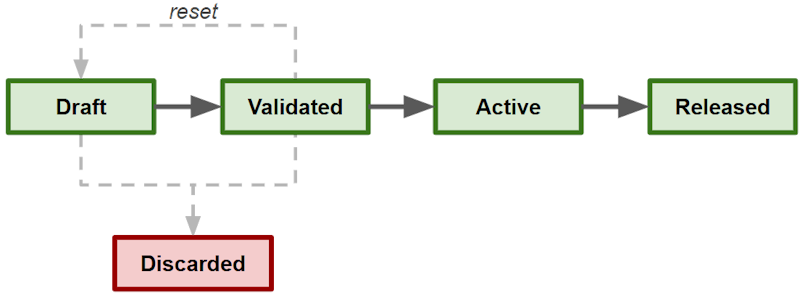Billing Holds
Overview
Billing Holds are available to prevent the system from initiating or continuing automatic invoicing and delinquency processes that should not be made for certain accounts in the system. These are implemented using Hold objects. These are created and managed as needed to reflect the onset and eventual conclusion of any desired hold states.
Lifecycle
The lifecycle of a hold looks like this:

Holds can be created in draft state and then validated, but won’t have an effect until you explicitly activate them.
When a hold should no longer be in effect, you can explicitly release or discard it.
Validation
Unlike other entities where extension data is used, validation as it pertains to billing holds is focused on two basic checks:
Does the target account of the hold exist?
Are there any existing
activeorvalidatedholds for the given target type (invoicingordelinquency) and target account?
Similar to other entities, if a hold is created in draft state, it can be advanced to later states as long as it passes validation.
Invoice Holds
When a hold exists for an account with targetType equal to invoicing, then invoices will not be created for that account. The relevent installments will remain in uninvoiced state until the hold is released or discarded.
Note
Invoices that have already been generated will remain and can become past due. To prevent the delinquency from proceeding, create a delinquency hold in addition to the invoicing hold.
Delinquency Holds
If an account has a hold with targetType equal to delinquency, then:
Any new delinquencies will be created in
preGracestate, and they will not proceed, and the grace period will not commence.Existing delinquencies that are
inGracewill revert topregracestate and act as if the delinquency had not yet commenced.
When it comes time to release the delinquency hold, the grace period can be adjusted so that the policy will lapse at an appropriate time if it remains delinquent.